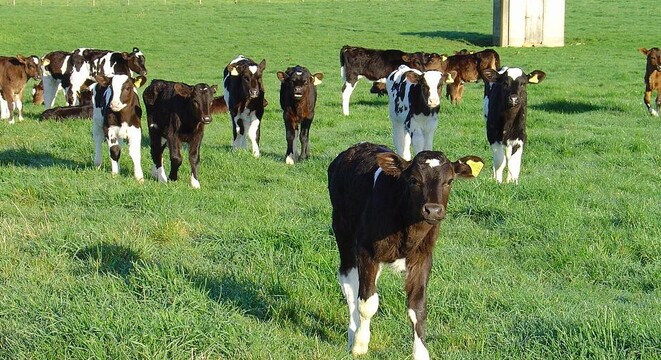Here are a few things to consider heading into our most challenging growing period... winter.
Growth rates
- Increase weighing frequency if underperforming. Get Britt in from Weigh It Up to provide clear data for graziers and owners.
- Draft off the worst performers (if any) and preferentially feed in a smaller mob with minimal competition.
- Split your main mob into heavier calves and lighter calves. This will help reduce competition and more accurately feed according to their demands.
- If your youngstock are unlikely to maintain good growth rates during the winter months (due to diet, transport, diet change, transition, weather etc.), grow them above target in autumn to provide a buffer for those problematic months. This will help minimise the impact of reduced growth rates on their target live weights at mating and beyond.
Animal Health Treatments
Trace elements: How frequently can your stock be yarded now and over the winter period? Are long-acting products the best option for you?
Drenching: Internal and external parasite management
- R1's: Require regular combination drenches throughout autumn. Frequent drenching should be maintained if wintering on grass. But if wintering on crop, drench requirements are reduced. A combo drench that includes levamisole is essential to combat Cooperia in autumn, and an 'ML' like abamectin is good at tidying up lungworm.
Vaccinations: Maintain all planned preventative vaccinations. This might mean 2x shots for unvaccinated animals (a primary shot and a sensitiser 4-6 weeks later), or just 1x annual booster shot if the primary programme has already been completed.
- Lepto
- Clostridia (included in Lepto if using 7in1)
- Salmonella
- BVD
- R2s specifically - Rotavirus vaccinations during winter.
Heifer teatsealing: Get this booked in early — if changing grazing locations for winter, choose a date to utilise the best facilities.
Transition onto winter crop, and planning for supplements required throughout:
Basic principles apply — introduce new diet slowly to allow gut bugs to adjust (increase by 0.5kg every 2nd day, if the whole break is eaten first); feed baleage or hay to maintain rumen development and balance nutritional requirements, and never put the youngstock on crop if they are hungry (feed the supplement first).
Once adjusted to the crop — 2x important feed questions must be answered:
- Are they getting fed enough?
- Are they getting fed enough of everything that they need?
- Difficulty eating bulbs: It can take a while for some calves/yearlings to figure out how to eat the bulbs properly. Take care not to leave too much bulb (beet or brassica) behind with each new shift. The fast learners will go back and hoover up excess bulb before the rest have caught on — risking major gut aches and acidosis.
- Rumen development: Youngstock rumens are still developing so energy, protein and fibre are needed to feed the rumens. Rumen capacity is an important factor in future adult performance.
- Growth requirements: Not only are the calve's rumens still developing, but the rest of their body is also growing flat out too — especially their muscles and bones! Crops alone won’t meet all their nutritional requirements — energy, protein, fat, fibre and minerals (calcium, phosphorus, selenium, cobalt, copper and iodine).
It is common to hear farmers frustrated that their youngstock are being fully fed, but not growing well. It can be very hard to pick up early as the stock tend to be full and content, but weight gains drop off. And that’s when question 2. ‘are they being fed enough of everything that they need’ really needs to be figured out, and changes made to properly balance their diet. A bit of planning now, and choosing which feed to allocate to which group of animals can go a long way.
This has only scratched the surface of all the things coming up for your youngstock — but hopefully it’s enough to provoke a few questions. Don’t hesitate to get in touch with your KeyVet, to get into more detail about anything mentioned above.
- Claire Hunter



